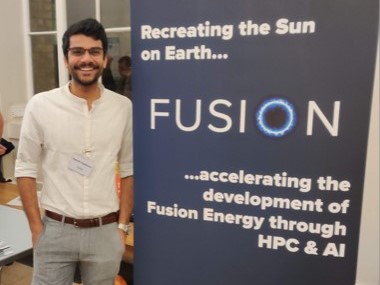Date: Postponed!
Speaker: Vignesh Gopakumar - AI Researcher at the United Kingdom Atomic Energy Authority
Abstract
Predicting plasma evolution within a Tokamak is crucial to building a sustainable fusion reactor. Whether in the simulation space or within the experimental domain, the capability to forecast the spatio-temporal evolution of plasma rapidly and accurately could improve active control methods on current tokamak devices and future reactors. In this work, we demonstrate the utility of using Fourier Neural Operators (FNO) to model the plasma evolution in simulations and experiments. Our work shows that the FNO can predict magnetohydrodynamic models governing the plasma dynamics, 5-6 orders of magnitude faster than the traditional numerical solver, while maintaining considerable accuracy.
Through this work we introduce a modified version of the FNO that is capable of handling multi-physics scenarios, exploiting the dependence of the variables within a single model. Our work also benchmarks the performance of the FNO against other standard surrogate models such as Conv- LSTM and U-Net and demonstrate that the FNO takes significantly less time to train, requires less parameters and outperforms other models. We extend the FNO approach to model the plasma evolution observed by the cameras positioned within MAST, fusion device. We illustrate its capability in forecasting the formation of filaments within the plasma as well as the heat deposits/reflections. The FNO deployed to model the camera can forecast the full length of the plasma shot within half the time of the shot duration, thus could potentially be deployed as a predictive digital twin while monitoring real-time plasma evolution. We also estimate the uncertainty associated with our predictive models by way of performing Bayesian approximation and Conformal Prediction.

Biography
Vignesh Gopakumar is a Data Scientist with an extensive background in Physics. His main area of research is crafting explainable AI agents through an ensemble of ML models that amalgamate known physical laws with observable data.
His research also focuses upon creating actionable surrogate models by way of uncertainty quantification coupled with informed sequential design sampling of the input hyperspace.
